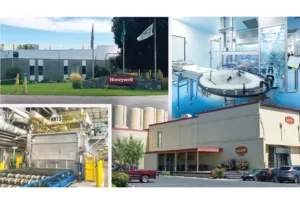M&A activity, financing availability improve
Business valuations are rising, but sales depend on performance indicators
The market for mergers and acquisitions is clearly improving in terms of valuations, financing availability, and deal volume—and that market will continue to do so throughout 2012, a new survey indicates.
The survey was conducted by MBA students and Professor Kevin J. Mulvaney at Babson Park, Mass.-based Babson College in collaboration with members of The Association for Corporate Growth and Exit Planning Exchange.
Looming clouds on the horizon might include variations in the capital gains rate, estate changes, and uncertainty about economic growth and the effect of world events on the global economy. This is the fourth year of the Babson survey, which has delivered "extremely accurate" projections in its previous years, Mulvaney says.
The environment for exit continues to improve. Valuations are rising and are projected to continue to rise. The market to sell a business or restructure capital is good. Key is getting the company's revenue growth and EBITDA (earnings before interest, taxes, depreciation, and amortization) to acceptable standards versus the industry average and the expectations of the buyer.
In 2011, valuations in most industries increased by one to one and a half times EBITDA multiples. Most industries are still between one and two times EBITDA away from the peak valuations seen before the last recession.
More buyers will look for acquisitions, and more strategic corporate buyers will seek out the lower end of the middle market, according to survey findings. International buyers increasingly will target middle-market companies, and this trend will continue if the recovery lasts.
Financial buyers will become more active as financial institutions increase M&A loans. Most survey respondents expect a moderate improvement in contracts but better availability of funding.
Equity requirements for financial buyers have stabilized, but banks are looking for better performance from targeted companies. Financial backing for turnarounds continues to be difficult. The seller's challenges will be getting the deal done, because the timeframe is now longer from start to finish, at 10 to 12 months.
A second challenge is "seller assistance" for business owners. The survey shows that the percentage differs depending on the size of the deal—a low percentage in middle-market deals against a high percentage in service industries and in smaller company transactions. Also influencing seller assistance is the financial condition of the seller's company, the outlook for the economy, and the seller's industry in the view of the buyer.
Volume continues to increase moderately, and the largest concentration of activity is in service industries. Service company owners are looking to combine or sell due to the challenge of rebuilding revenue bases in an industry sector that is in transformation.
Related Articles

_c.webp?t=1763626051)


